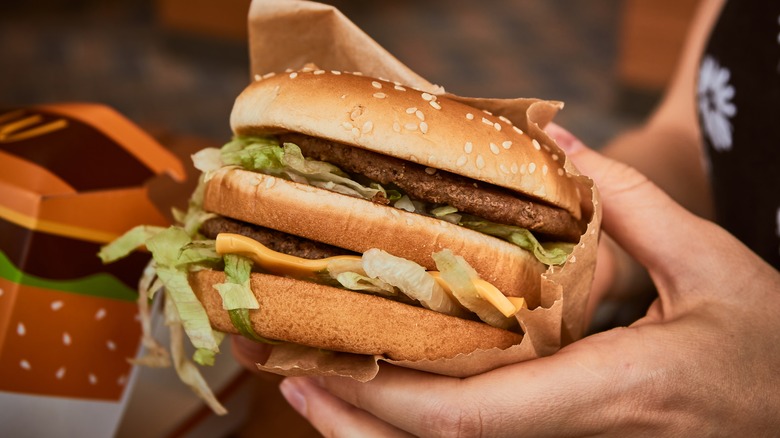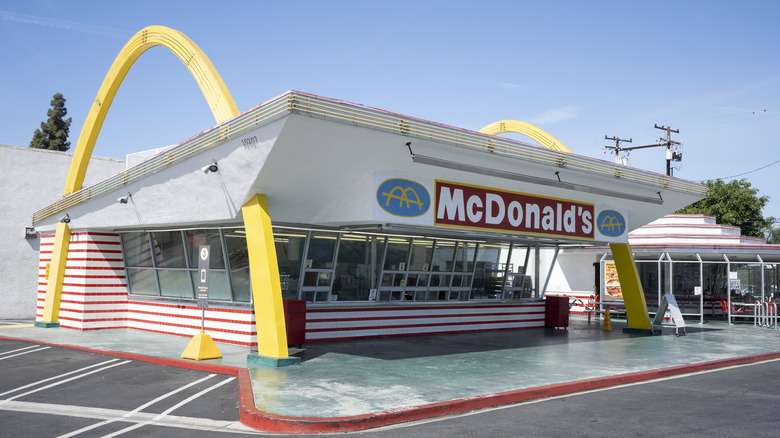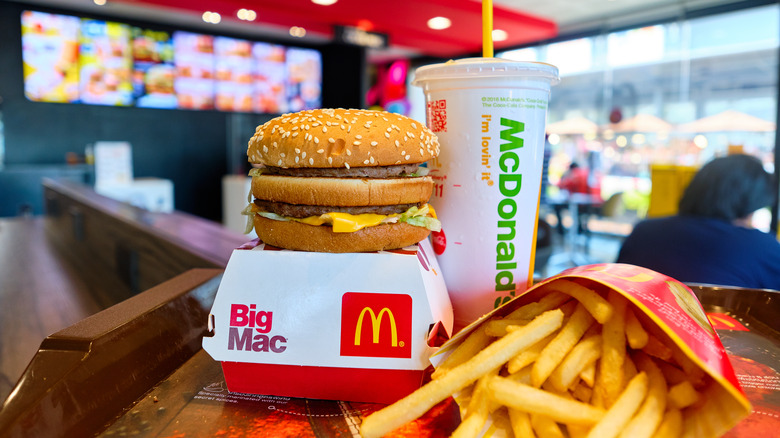McDonald's Big Mac Was Originally Created For Steel Workers
First created in Pennsylvania in 1967, the Big Mac is one of McDonald's biggest successes and, according to Reader's Digest, is the second most popular item on the restaurant's menu after french fries. Sold all over the world, this impressive sandwich is so widespread that the Big Mac Index — a comparison of global Big Mac prices — is used as a way of measuring whether a country's currency is over or undervalued and is religiously published by The Economist at the beginning of every year. As such an economically important sandwich, it makes sense that the Big Mac's beginnings can be traced back to working-class people.
Specifically, the Big Mac was first invented in Uniontown, a steel-milling town around 50 miles south of Pittsburgh, and was an immediate hit being sold in McDonald's all over America only one year after its creation. So, what was the inspiration behind this classic sandwich and how did the inventor, Jim Delligatti, come up with the idea in the first place?
Big Mac: A bigger sandwich for hungry workers
In 1967, Jim Delligatti was the owner of multiple McDonald's franchises in the Pittsburgh area, and, according to Adweek, had begun noticing that the regular McDonald's hamburger wasn't big enough the fill the bellies of steelworkers and other working-class people. So, he knew he wanted to make a bigger sandwich and took inspiration from another burger chain that was already selling a larger hamburger, called the Big Boy. The Big Boy was made with two patties, cheese, lettuce, and sauce on a sesame seed bun. Delligatti then put his own twist on the sandwich by adding a few new ingredients like pickles, onions, and the famous secret sauce. When he started selling the sandwich in Uniontown, it was immediately popular with the store's sales increasing by 12%.
According to the Pennsylvania Center for the Book, Delligatti's original sandwich had the slogan "A Meal Disguised as a Sandwich" and was sold for only $0.45. The famous name Big Mac was coined later by Esther Glickstein who was a young advertising secretary at McDonald's corporate office. Her idea was originally brushed aside for flashier names like the Aristocrat and Blue Ribbon Burger. Luckily, it was the name Big Mac that stuck.
The Big Mac legacy today
The bigger and more filling Big Mac is still one of the most-sold sandwiches on the McDonald's menu and there are even multiple variations of Big Macs sold around the world like the chicken-based Maharaja Mac in India and the kosher Big Mac of Israel. No matter their form, these sandwiches are popular everywhere, and in 2017, McDonald's sold 1.3 billion Big Macs worldwide.
However, despite its 50-plus-year reign as the king of all sandwiches, the Big Mac has recently faced tough competition from other gourmet burger chains and, according to the The Wall Street Journal, McDonald's has become increasingly concerned that only one out of every five millennials has ever had a Big Mac. Only time will tell if this American fast food icon will stay on top or be replaced by another contender. In the meantime, if you want to get more of that Big Mac flavor, you're in luck because soon the Big Mac's secret sauce will have a spot on the McDonald's menu! To truly immerse yourself in Big Mac lore, though, you'll have to head back to the source. Make your way to North Huntingdon, Pennsylvania, and you'll find the Big Mac Museum, where you can gaze at a towering statue of the fabled sandwich while munching on one.


